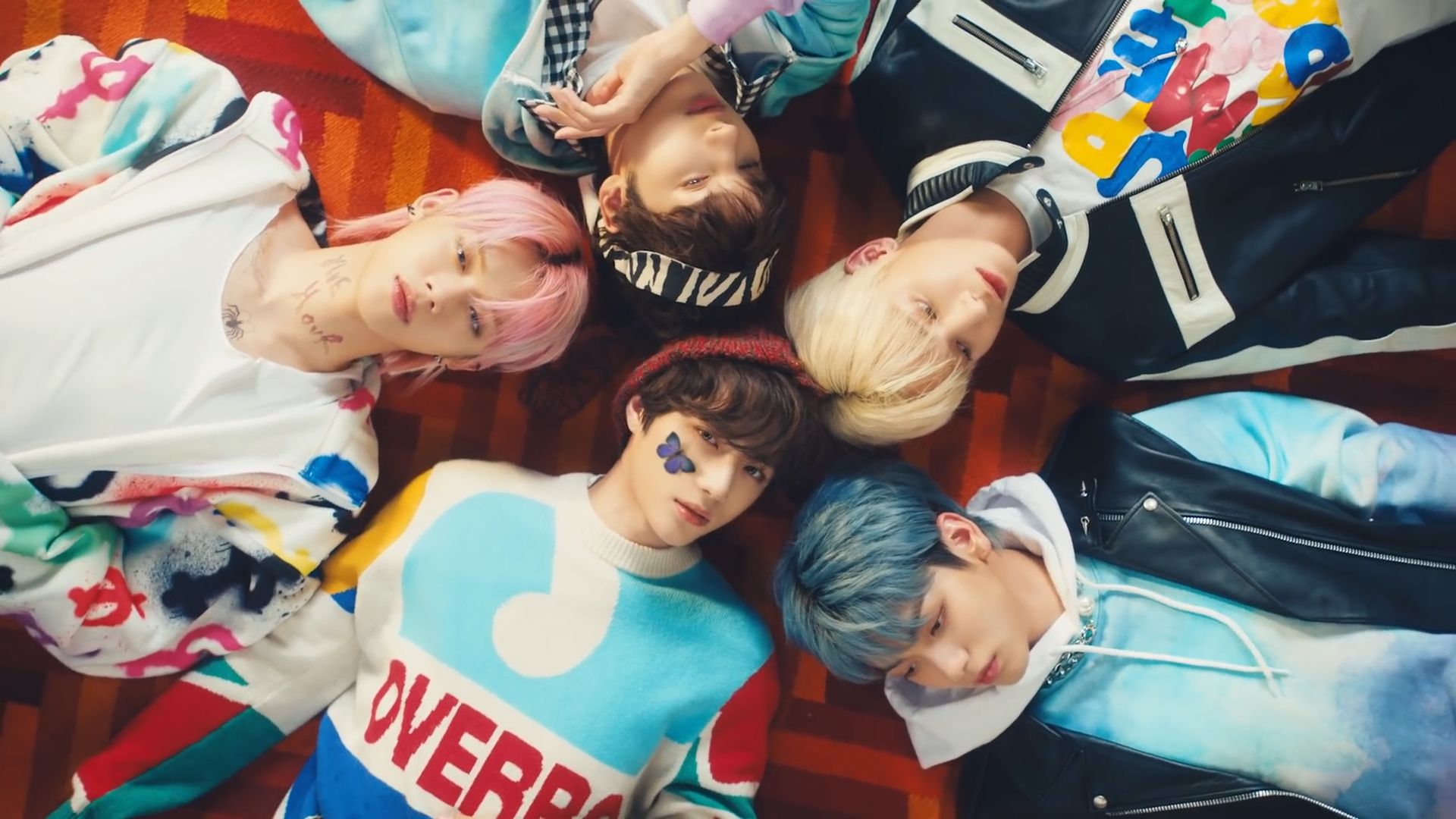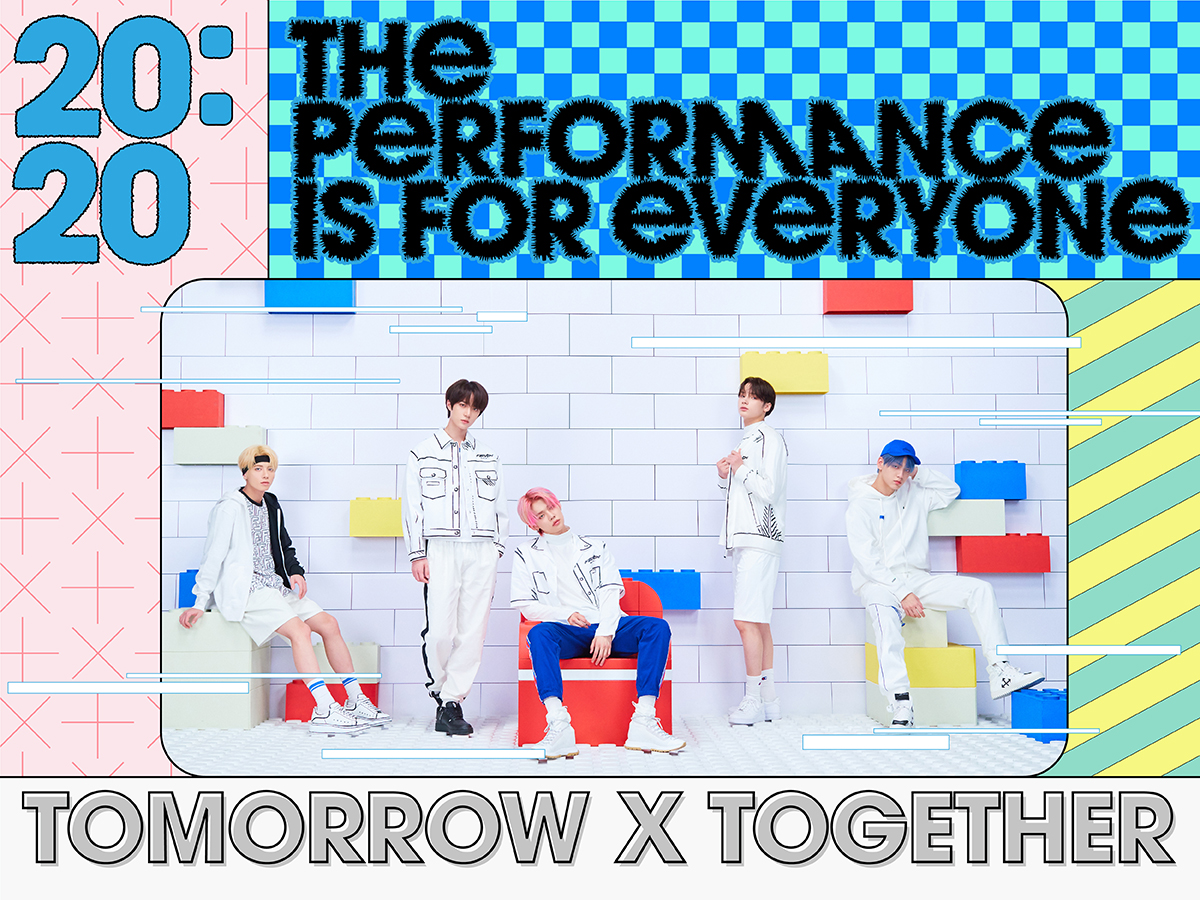
FEATURE
TOMORROW X TOGETHER: a new kind of K-pop for American teens
Yet another reason US teens are falling for K-pop
2021.02.08
Let’s play a Google autocomplete game. If you type “why K-pop” into the search field, the first suggestion is “why K-pop is popular.” Two things are for certain: First, K-pop is popular; second, people are curious as to why. For some time, numerous articles, not in specialized K-pop or music journals but in the general media, have tried to answer this question. It often goes like this: The genre marries auditory and visual elements; it draws from almost every major Western musical genre to find catchy melodies; visually, its music videos are conceptual and focus on fashion, choreography, and storytelling; unique, talented artists go through a long training period, but their appeal also comes from presenting their everyday selves in addition to their artistic personas.
Every one of these observations is accurate. However, this is closer to a description of how K-pop has been introduced to the outside world. This is of course because the music excels in all of these categories, which in turn have allowed the genre to enjoy widespread interest and recognition internationally. International articles usually chronical the history of K-pop by starting with Seo Taiji and the Boys, then cover PSY and Girls’ Generation, and finally come to BTS. The continuous improvement in quality and the particular characteristics it has developed are key points in the history of K-pop. Naturally, K-pop groups who enter the US market emphasize concepts that capture the market’s trends along with the previously mentioned factors.
But this is not a satisfactory answer to our question. Why is the world’s most popular boy band a K-pop group? And why do some new artists spontaneously become popular in North America despite having no special promotions targeting the region? Aside from being good, what sets them apart? To find answers, let’s look back on the extraordinary events of the past summer in the US when racial tensions had been ignited. In response to the music industry’s #BlackoutTuesday movement, which rallied against racism, hashtags like #WhiteoutWednesday and #AllLivesMatter emerged. These latter ideas are, of course, forms of discrimination. While this was going on, droves of K-pop fans posted videos, GIFs, and photos of their favorite K-pop artists in conjunction with the problematic hashtags to drown out the hate speech. To begin with, this shows the positive effect K-pop artists have. If we peel back a layer, we can see K-pop’s history of appealing to minorities in overseas markets from its very earliest days. More fundamentally, we see a topic that K-pop has traditionally dealt with—one familiar to Koreans but which is in fact not typically handled in popular culture. Comfort and introspection for younger generations conveys a message of loving yourself, and awareness of an absurd social structure leads to interest from the public. This unique situation has been the story of K-pop idols since as far back as H.O.T.
This is a gap that has always existed in mainstream US culture—a vacuum between the dangers of the “parental advisory: explicit content” sticker and the safety of the Disney Channel. In the US, there are people dealing with that gap in numerous interesting ways, but they are not notable artists, nor can they be seen on prime time TV. On the contrary, it’s not unusual to see K-pop idols sing about school violence, homogenous education, broken dreams or hellish social inequality on weekend TV. With the most intensive education system in the world and a society that is, right from childhood, infamously competitive, it is perhaps not surprising but nonetheless fascinating for this phenomenon to have developed in Korea. Once combined with K-pop’s highly polished audiovisual splendor, this ironic circumstance that had come to fruition within the Korean idol industry over two decades was picked up by the younger generation of US listeners. The joke about parents singling out “Dynamite” during its competition with “WAP” for chart dominance because it’s a safe choice has some truth to it.
Every one of these observations is accurate. However, this is closer to a description of how K-pop has been introduced to the outside world. This is of course because the music excels in all of these categories, which in turn have allowed the genre to enjoy widespread interest and recognition internationally. International articles usually chronical the history of K-pop by starting with Seo Taiji and the Boys, then cover PSY and Girls’ Generation, and finally come to BTS. The continuous improvement in quality and the particular characteristics it has developed are key points in the history of K-pop. Naturally, K-pop groups who enter the US market emphasize concepts that capture the market’s trends along with the previously mentioned factors.
But this is not a satisfactory answer to our question. Why is the world’s most popular boy band a K-pop group? And why do some new artists spontaneously become popular in North America despite having no special promotions targeting the region? Aside from being good, what sets them apart? To find answers, let’s look back on the extraordinary events of the past summer in the US when racial tensions had been ignited. In response to the music industry’s #BlackoutTuesday movement, which rallied against racism, hashtags like #WhiteoutWednesday and #AllLivesMatter emerged. These latter ideas are, of course, forms of discrimination. While this was going on, droves of K-pop fans posted videos, GIFs, and photos of their favorite K-pop artists in conjunction with the problematic hashtags to drown out the hate speech. To begin with, this shows the positive effect K-pop artists have. If we peel back a layer, we can see K-pop’s history of appealing to minorities in overseas markets from its very earliest days. More fundamentally, we see a topic that K-pop has traditionally dealt with—one familiar to Koreans but which is in fact not typically handled in popular culture. Comfort and introspection for younger generations conveys a message of loving yourself, and awareness of an absurd social structure leads to interest from the public. This unique situation has been the story of K-pop idols since as far back as H.O.T.
This is a gap that has always existed in mainstream US culture—a vacuum between the dangers of the “parental advisory: explicit content” sticker and the safety of the Disney Channel. In the US, there are people dealing with that gap in numerous interesting ways, but they are not notable artists, nor can they be seen on prime time TV. On the contrary, it’s not unusual to see K-pop idols sing about school violence, homogenous education, broken dreams or hellish social inequality on weekend TV. With the most intensive education system in the world and a society that is, right from childhood, infamously competitive, it is perhaps not surprising but nonetheless fascinating for this phenomenon to have developed in Korea. Once combined with K-pop’s highly polished audiovisual splendor, this ironic circumstance that had come to fruition within the Korean idol industry over two decades was picked up by the younger generation of US listeners. The joke about parents singling out “Dynamite” during its competition with “WAP” for chart dominance because it’s a safe choice has some truth to it.
In November, TOMORROW X TOGETHER’s Minisode1: Blue Hour reached number 25 on the Billboard 200. It is the best charting album for a K-pop artist in their second year after their debut—an impressive record, considering K-pop artists have been unable to perform in the US due to COVID-19. With widely recognized artists having an advantage on the charts before the pandemic to begin with, it’s clear how much this group’s fanbase has expanded since its debut ranked 140 on the Billboard 200. Most of the songs on their debut Japanese album, Still Dreaming, are in Japanese, yet at the time of its release it was the most spotlighted K-pop album within the US. The lead single off the album, the Japanese version of “Blue Hour,” took off as the most important new song in the K-pop sections of Spotify, Apple Music, and Tidal alike, and was pushed up on related playlists. It is unprecedented for a Japanese language track to receive such attention, even if it is sung by a popular K-pop artist. This phenomenon, in which a K-pop artist’s debut Japanese album draws the attention of US music consumers, is in some ways to be expected with TOMORROW X TOGETHER, who have from their inception made teenage emotions and relationships a focus of their work. They also deal with the impact of COVID-19 on teenagers’ school lives on their latest album with songs like “We Lost the Summer.” Idols are naturally drawn to themes of teenage excitement and anxiety, but such themes also represent an untapped demand that is not easily filled by love songs.
K-pop reached new heights when PSY generated interest in a trend that transcends language. Now, it has expanded to take on emotions that are universal, regardless of language, but which are often brushed aside. This is why the K-pop of “tomorrow” isn’t about more lavish production, but more thoughtful observation and consideration. Teens are looking for songs that they feel help them see the world “together,” no matter where they are.
K-pop reached new heights when PSY generated interest in a trend that transcends language. Now, it has expanded to take on emotions that are universal, regardless of language, but which are often brushed aside. This is why the K-pop of “tomorrow” isn’t about more lavish production, but more thoughtful observation and consideration. Teens are looking for songs that they feel help them see the world “together,” no matter where they are.
Article. Seongdeok Seo(Music Critic)
Photo Credit. BIGHIT MUSIC
Copyright © Weverse Magazine. All rights reserved.
Unauthorized reproduction and distribution prohibited.
Unauthorized reproduction and distribution prohibited.
Read More
- 2020 TOMORROW X TOGETHER’s performance2020.12.28

- 숫자로 본 투모로우바이투게더의 성장2020.11.09

